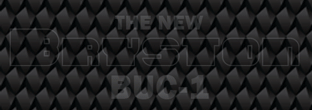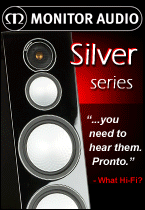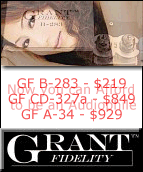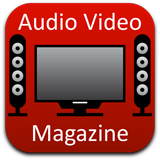
Does the proposition of free HD programming sound attractive to you? You’re not alone! A growing number of television viewers are connecting antennas to their HDTVs which allow them to watch some of the best quality HD programming available today. The number of free over-the-air HD channels has seen a healthy growth during the last couple of years. Most major networks are now broadcasting much of their primetime line-ups in HD.
And here’s something really surprising to most consumers: The picture quality of over-the-air HD is often superior to that of digital cable or satellite HD channels. How can this be, you ask? Digital cable and satellite providers highly compress their signals in order to fit more channels into a limited bandwidth. This compression results in various picture artifacts - the most noticeable is a “blocking” artifact which appears as a group of static pixels in fast motion scenes. Over-the-air HD, on the other hand, is not compressed and hence has the potential of producing a crystal clear HD picture.
So how can you get in on some of this free HD action? Presumably you already own an HDTV that has a built-in ATSC digital tuner. The only other component that you’ll need is an antenna. I recently met Edmond Poon of Karmond Company who imports Nippon Antenna indoor and outdoor antennas designed in Japan. His passion for over-the-air HD was undeniable as was his excitement about the Nippon antennas. My interest was sparked and we decided to put a couple of these antennas through the paces at CANADA HiFi.
Karmond Company imports three different Nippon antenna models: UDS35, UDF60 and UDF80. All three models can receive both analogue and digital over-the-air channels but the main focus of this review is on the reception of HD channels, since analogue broadcasting will soon be phased out. The UDS35 is a compact, entry-level model designed for smaller spaces. The subjects of this review - the UDF60 priced at $149 and the UDF80 at $199 - are larger models that can be used on a table top, wall mounted or mounted outdoors. The notable differences between these two models are their operating gains and size. The UDF60 offers a 3.5 to 6 dB gain and measures 261 mm wide by 319 mm high by 52 mm deep. The UDF80 offers a 6 to 8 dB gain and is just slightly larger, measuring 270 mm wide by 431 mm high by 61 mm deep.
From the outside, the Nippon antennas don’t look like typical antennas at all. Each model is encased in a flat panel, glossy white casing. You shouldn’t be hesitant to place these antennas in plain view indoors or outdoors - antennas don’t get more elegant than this!
I took turns connecting the UDF60 and the UDF80 to my reference Pioneer PDP-5010FD Kuro plasma TV. Both antennas were tested in three different locations: On the windowsill in my living room, on top of the awning of my first floor patio and finally mounted to the chimney of my two storey house. I should mention that I tested the antennas in Toronto, Ontario, as the number of channels and the channel line-up will inevitably vary depending on your location.
Sitting on the windowsill in my living room, the UDF60 allowed me to receive 12 standard definition channel and 3 high definition channels. In the same spot, the UDF80 picked up 16 standard definition channels and 6 high definition channels. With both antennas, more than half of the standard definition channels were fuzzy and the high definition channel signals faded at times. Something that you should know about over-the-air HD programming is that you either receive a channel or you don’t - you will not get a fuzzy picture with a weaker signal like you might with SD channels. Anyway, there was nothing impressive about the number of channels I received with the antennas on the windowsill. But as anyone that’s toyed with an antenna before knows, finding the right placement is very crucial to success.
Without delay, I took both antennas outside and placed them on top of the awning of my first floor patio. I could have taken the antennas directly to the peak of the roof but I didn’t for two reasons (not necessarily in this order): First I wanted this review to illustrate how important antenna placement is and secondly I’d have to get my ladder out of the garage. The reception improvement was tremendous! The UDF60 now picked up 11 SD channels and 6 HD channels, while the UDF80 picked up 16 SD and 10 HD channels. Not only was I getting a larger number of SD channels, the quality of the picture improved significantly. I was glad to find that the picture of the HD channels did not drop out nearly as often as well.
By now I had a decent selection of HD channels and left the UDF80 on top of the awning for several days. Although I’ve watched a good share of over-the-air HD programming, I’m still surprised at just how good it can look. The first time I sat in front of the TV, I caught a playoff game between the Philadelphia Flyers and the Pittsburgh Penguins. The clarity and sharpness of the HD picture were undeniable. The numbers and names on the back of the players’ jerseys were clearly readable. Even the faces of the fans in the crowd were easily distinguishable. When the camera shifted quickly across the rink, the picture remained sharp and didn’t display any of the annoying blocking artifacts associated with digital cable or satellite HD channels. Throughout the week, I also watched a few episodes of CSI in HD and couldn’t be happier with the quality of the picture.
Inevitably, the day came when I had to get the ladder. When attached to my chimney, the UDF60 picked up 15 SD and 10 HD channels. The UDF80 on the other hand topped out at 17 SD and 14 HD channels - not too shabby! The HD channels that I was able to pick up in the end with the UDF80 antenna included: CBC, ABC, CTV, The CW, Global, SUN TV, NBC, CBS, Radio-Canada (French), OMNI2, OMNI1, PBS, FOX and Citytv. You will notice that while most of these channels are Canadian, we are able to pick up some US based channels here in Toronto as well.
Clearly the placement of the antennas had a huge impact on the number of channels that I was able to receive. Hence, if you plan to purchase an antenna, I strongly recommend that it’s an outdoor model and that you install it at the highest possible elevation. If you live in Toronto and can see the CN Tower from the roof of your house (or the balcony), you will likely get a few more HD channels than I received. Residents of Montreal and Vancouver should also be able to pick up a healthy number of HD channels with an antenna.
I’ve tried a number of brand name antennas during the last year ranging from $50 to about $150. My experiences with these antennas were not nearly as favourable as with the two Nippon antennas in this review. Both the UDF60 and the UDF80 antennas are easy to recommend to anyone that would like to take advantage of the growing number of free over-the-air HD channels. In my opinion, you might as well get the UDF80 - it’s well worth the extra $50.
Manufacturer:
Nippon Antenna www.nippon-antenna.co.jp
Distributed in Canada by Karmond Company www.karmond.com
416-816-9848
UDF60 Price: $149
UDF80 Price: $199
Click here to discuss this article on the CANADA HiFi Forum














